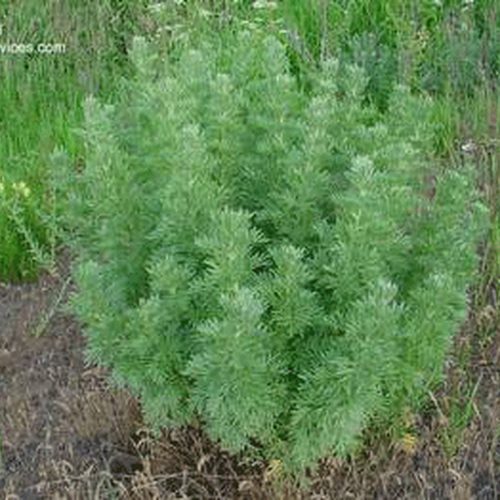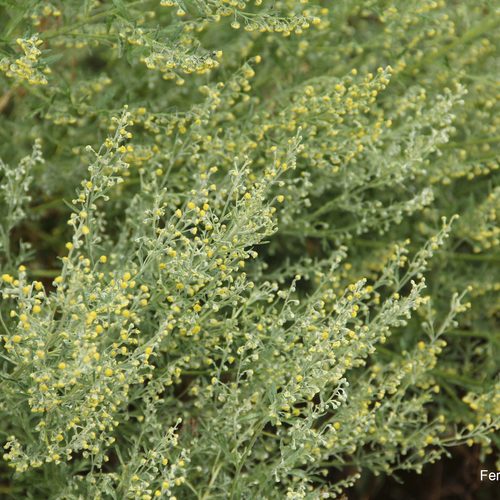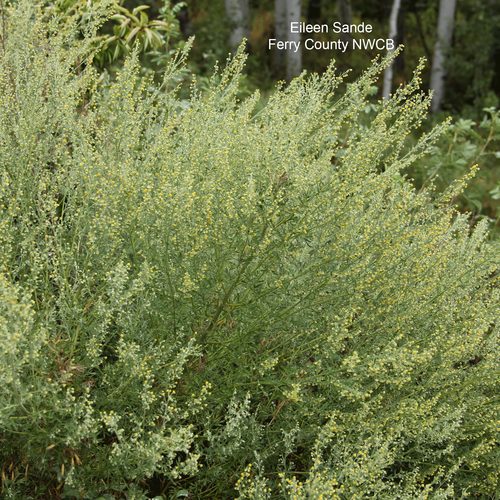Absinth Wormwood
Artemisia absinthium

Family: Asteraceae
Other Common Names: common wormwood, wormwood sage
Weed class: C
Year Listed: 1988
Native to: Eurasia
Is this Weed Toxic?:
Humans
Why Is It a Noxious Weed?
Absinth wormwood will outcompete desirable forbs and grasses in pastures, fields and native grasslands. It easily establishes in disturbed areas where there is little plant competition.
How would I identify it?
General Description
Absinth wormwood is an herbaceous perennial with a strong sage odor. It commonly grows to 3 feet tall (sometimes to 5 feet tall). Plant is covered with fine, silky hairs and has a gray-green appearance.
Flower Description
Flower stalks appear at each upper leaf node and produce numerous yellow flower heads that are 1/8 inch in diameter.
Leaf description
Leaves are 2 to 5 inches long, divided two or three times into deeply lobed leaflets. Leaves reducing in size going up the stem.
Stem description
Absinth wormwood has branching stem.
Fruit Seed Description
Seeds (achenes) are smooth and hairless.
Where does it grow?
The plant grows in both dry and moist soils. Absinth wormwood is generally found on dry soils in pastures, cropland, farmsteads, shelterbelts, roadsides, fence rows and waste areas. Please click here to see a county level distribution map of absinth wormwood in Washington.
How Does it Reproduce?
Reproduces primarily through seed production, but can also spread by short roots. The plant is a prolific seed producer with seedlings emerging anytime from late spring to early fall. Seeds may remain viable for 3 to 4 years.
How Do I Control It?
Mechanical Control
Tillage can prevent establishment of absinth wormwood in crop production areas. Mowing may prevent seed production if mowed several times throughout the growing season, but mowing may be difficult in fence rows or rocky areas. Burning may not be an effective control method for absinth wormwood as infestations are not reduced and may increase.
Cultural Control
Management should include proper grazing and rotational grazing techniques that would maintain rangelands and prevent invasion of the plant. Disturbed areas should be re-seeded with desirable species to prevent spread of absinth wormwood.
Herbicide Control
Please refer to the PNW Weed Management Handbook, or contact your county noxious weed coordinator.
For More Information
See our written findings for more information about absinth wormwood (Artemisia absinthium).
Lincoln County NWCB Fact Sheet on Absinth Wormwood
Invasive.org webpage on Artemisia absinthium
WTU Burke Herbarium image database information on absinth wormwood














